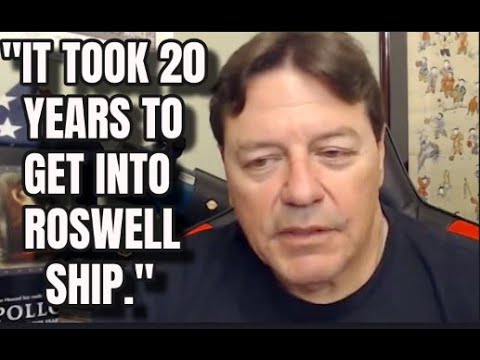
In a revelation that might rewrite parts of UAP (Unidentified Aerial Phenomena) history, Former Staff Sergeant Mario Woods, a veteran of the US Air Force, shared groundbreaking details on the efforts to penetrate the wreckage of the alleged Roswell spacecraft. During a podcast appearance on “Really with Tom and Dave,” Woods divulged that it took researchers an astonishing 20 years to breach the craft’s hull. This detail not only adds a new layer to the infamous 1947 Roswell incident but also hints at technological advancements that were possibly spurred by the extraterrestrial encounter.
Decades of Determination
According to Woods, the journey to uncovering the secrets held by the Roswell craft was neither quick nor easy. It spanned two decades, a testament to both the resilience and the limitations of human technology faced with potentially alien materials. The former staff sergeant described how the initial inability to penetrate the craft’s exterior led to the eventual development of a new type of cutting tool, which he referred to as a plasma-type cutter. This innovation marks a significant point in the narrative, suggesting that the Roswell incident could have been a catalyst for technological breakthroughs in materials science.
Implications of the Disclosure
The implications of Woods’ statement are manifold. Firstly, it highlights the challenges and complexities involved in dealing with materials that are not of this world. The fact that it took 20 years to make significant inroads into the craft’s structure suggests that the materials used in its construction were far beyond the scope of 1947-era Earth technology. This aligns with other accounts of recovered UAP artifacts exhibiting unusual properties, such as extreme durability and lightweight composition.
Furthermore, the development of a new plasma cutter in response to these challenges speaks volumes about the indirect benefits of engaging with unexplained phenomena. Such advancements may have broader applications, potentially revolutionizing industries and opening new avenues in scientific research.
Credibility and Controversy
While Woods’ account is compelling, it also feeds into the ongoing debate about the credibility of UAP witnesses and the veracity of their accounts. Skeptics might question the authenticity of the claim, pointing to the lack of physical evidence and the highly secretive nature of such military operations. However, for enthusiasts and researchers in the field of UAP studies, testimonies like that of Woods are invaluable. They provide insights into the government’s historical and possibly ongoing interactions with unidentified aerial and possibly extraterrestrial technologies.
VIDEO: Hidden Government UFO Cover-Ups Discovered By Ben Hansen | UFO Witness
As public interest in UAPs continues to grow, fueled by government acknowledgments and the release of official reports, the story shared by Mario Woods could play a crucial role in upcoming discussions and hearings on the matter. If validated, such firsthand accounts from military personnel could push for more transparent investigations and possibly the declassification of related documents.
In conclusion, the effort to breach the hull of the Roswell craft, as described by Former Staff Sgt. Mario Woods, not only underscores the persistence of human curiosity but also hints at the potential interplay between human and alien technologies. Whether this leads to further disclosures or more in-depth scientific inquiry remains to be seen, but one thing is clear: the Roswell incident continues to intrigue and inspire, more than seventy years after it first captured the public’s imagination.


Leave a Reply